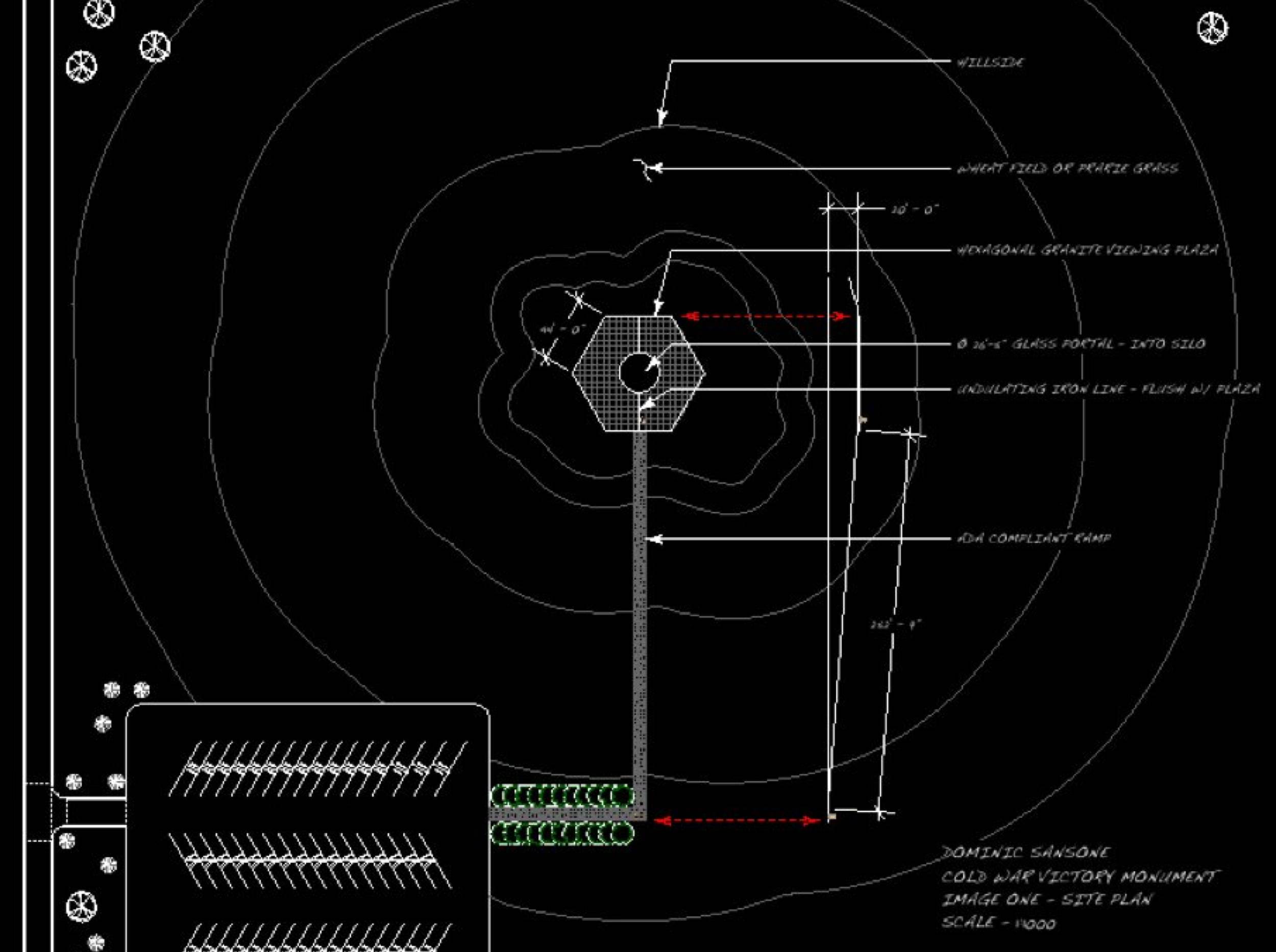Beacon an unrealized proposal for the Monument to Cold War Victory.
Having come of age during the endgame of the Cold War, a period sometimes referred to as the Second Cold War, I remember a very real and almost crippling fear of the Soviet Union and nuclear obliteration at their hands. Like the conflict itself, the “reds” were unseen, but all around us in our daily lives. At the time, my perception was the nightly news seemed flooded with stories about espionage, sabotage, and various proxy wars. This was only bolstered by the entertainment of the day, a steady visual diet of “Red Dawn”, “War Games”, and “The Day After”. I can recall asking my mother, “who the good guys were” in any given conflict. Usually it was whomever tended to be opposing the Soviets and their allies. The full picture could not possibly be comprehended by my mind then and could only come into focus with the distance of time. Sadly we now seem to see history repeating itself with the War on Terror, always some new enemy, war without end. I had communists as the source for my nightmares, my children will potentially have radical Islamists as their boogeymen.
Looking at public art, specifically war memorials, the tendency trends towards giant edifices filled with symbolism and a romanticizing of the warriors and conflicts. My proposal seeks to challenge this notion of the war monument by making it about a battlefield, but not a specific one; by making the conflict it memorializes an artifact, dead and buried; and by eliminating the romantic nature seemingly inherent in monuments to war.
The viewer approaches from the south and has a long walk up an inclined ramp. From the base of the ramp, there is nothing visible save for the surrounding fields of wheat or prairie plants. It is only once they reach the top of the incline that they are exposed to a hexagonal granite plaza. This hexagon represents the six decades the Cold War spanned, with each face being forty-four feet long, representing the forty-four years attributed to the conflict (1947-1991). Bisecting the plaza is an undulating line of iron, flush with the surface of the granite. In the center is a twenty-six and a half foot diameter glass floor that viewers step out onto. This glass platform looks down into a one hundred and forty-six foot deep hole that contains an acrylic scale reproduction of the Titan II ICBM, the ghostly form of the formerly destructive weapon, just below the audience. The diameter and depth, those of the actual missile silos these weapons were housed in. Here we have buried the silent warrior of the Cold War. Instead of memorializing the men and women, we memorialize the munitions, the great destroyer of worlds rendered impotent. At night, powerful lights at the bottom of the silo, shine a beam of light straight up and out into the night sky.
Like the Cold War, this monument cannot be seen in its entirety, except from a great distance. Up close it is specific; a ramp, a plaza, a missile; but from afar the full story is revealed. The entire site rendered a grave, but also a beacon shining in the night, warning future generations about the past.


